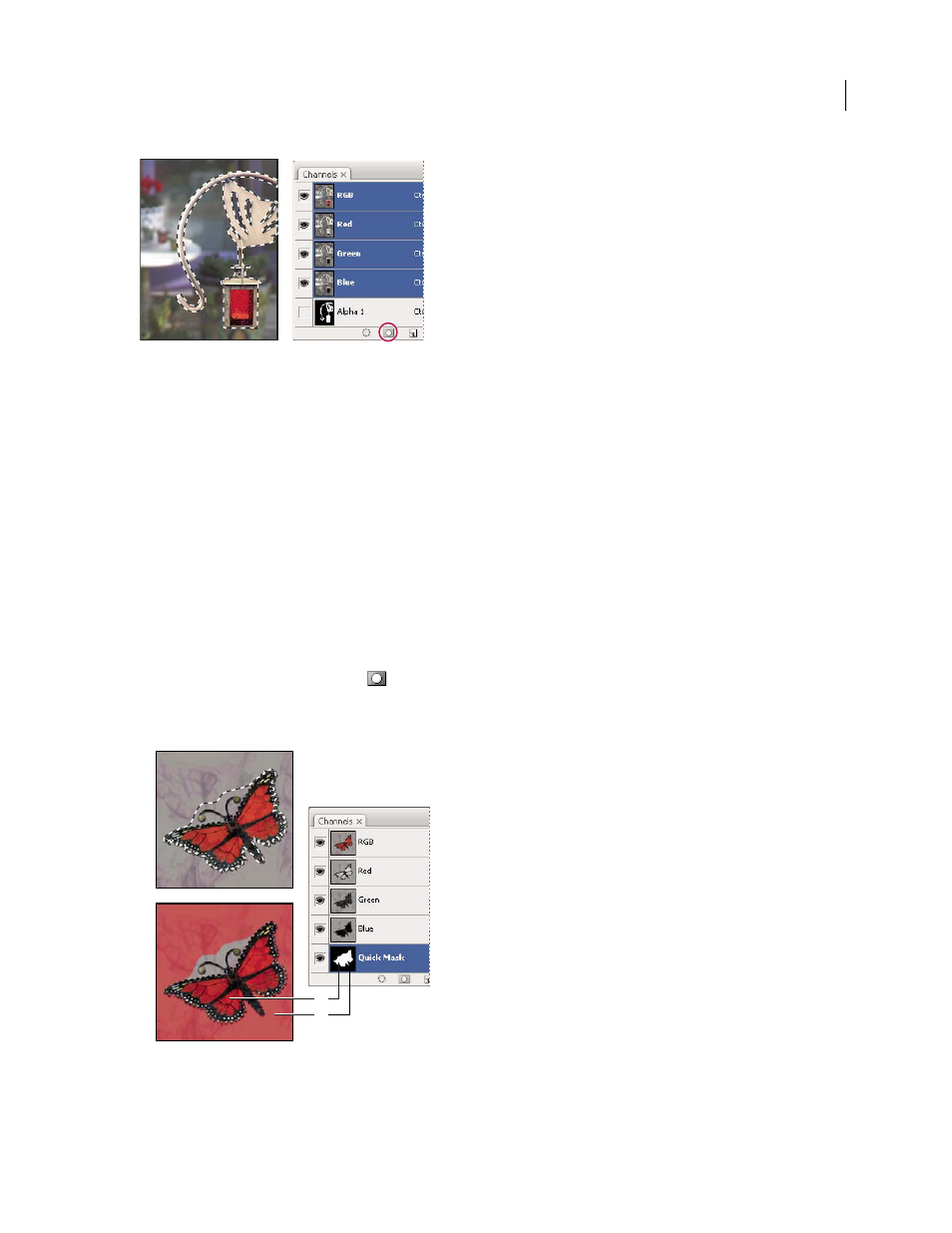Create a temporary quick mask – Adobe Photoshop CS3 User Manual
Page 277

PHOTOSHOP CS3
User Guide
270
Selection saved as an alpha channel in Channels palette
Note: You can mask or hide parts of a layer using a layer mask.
See also
“About layer and vector masks” on page 318
Create a temporary quick mask
To use Quick Mask mode, start with a selection and then add to or subtract from it to make the mask. You can also
create the mask entirely in Quick Mask mode. Color differentiates the protected and unprotected areas. When you
leave Quick Mask mode, the unprotected areas become a selection.
Note: A temporary Quick Mask channel appears in the Channels palette while you work in Quick Mask mode. However,
you do all mask editing in the image window.
1
Using any selection tool, select the part of the image you want to change.
2
Click the Quick Mask mode button
in the toolbox.
A color overlay (similar to a rubylith) covers and protects the area outside the selection. Selected areas are left unpro-
tected by this mask. By default, Quick Mask mode colors the protected area using a red, 50% opaque overlay.
Selecting in Standard mode and Quick Mask mode
A. Standard mode B. Quick Mask mode C. Selected pixels appear as white in channel thumbnail D. Rubylith overlay protects area outside
selection, and unselected pixels appear as black in channel thumbnail
A
C
D
B
